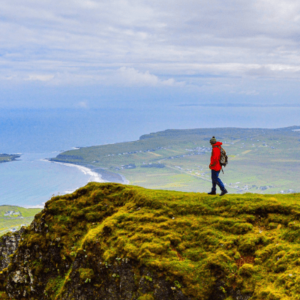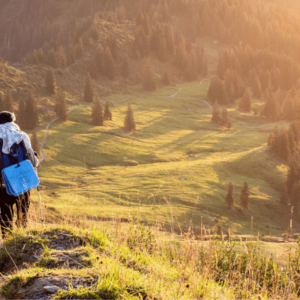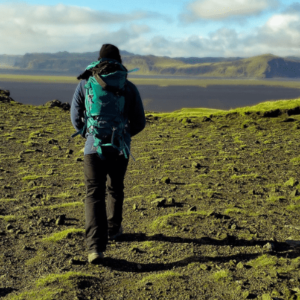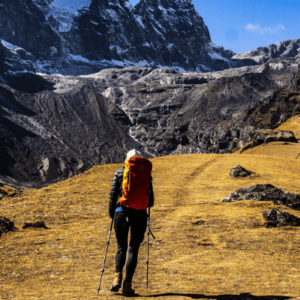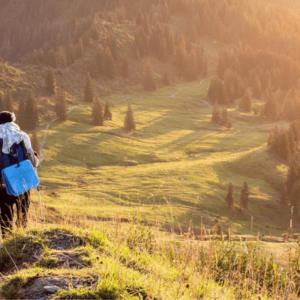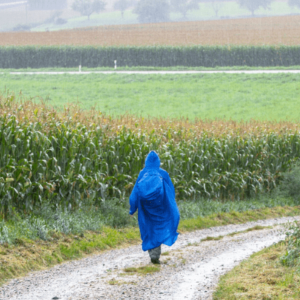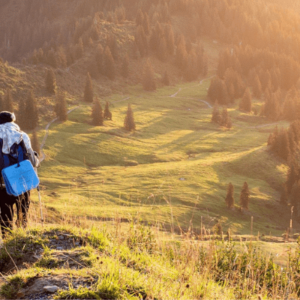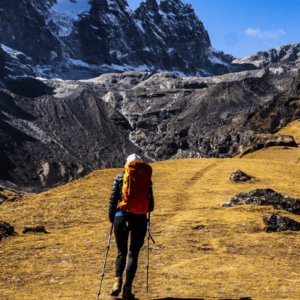Are you in the need of a real challenge? How about taking yourself glacier walking which is probably the most exciting, exhilarating and the most daunting experience that you can possibly have in the countryside. Often walkers find that once they have accomplished everything they want to within the United Kingdom, they head abroad either to start exploring higher and longer walks or, they start be involved in more dangerous, but at the same time, more exhilarating hikes.
This is where glacier walks come into their own and offer hikers that chance to really stretch their legs, however if you’re going to take on a glacier of your own, you will need to take a few precautions.
First up, you need to think about your personal fitness given that you’re going to be walking at altitude. Walking in the UK can test your fitness levels to maximum especially if you plan on doing long multi-day walks, however glacier walking is a whole another test to your fitness levels especially given that the air is much thinner at altitude.
Secondly, you need to make sure that you’re prepared which involves both the right clothing, and more important specialist glacier walking safety equipment. Below is a basic list of what you’ll need;
Basic Equipment List
- Specialist Climbing Harness – It’s vital that you choose the correct climbing harness as they will save your life. They vary in size and shape so make sure that you ensure that yours fits correctly and ideally by one with adjustable leg loops as these are more preferable. Some good selections include; Wild Country Eclipse, Edelrid Apex, and Black Diamond Alpine.
- Specialist Walking Boots – Make sure that they have a good fit with your crampons. Light Alpine boots or stiff walking boots are ideal.
- Crampons – are generally a must when you’re out Glacier Walking as the sharp spikes that attach to your boots meaning that you can easily grip the ice even on vertical slopes.
- Navigation Equipment – Crevasses aren’t displayed on any map so make sure that you have decent navigation equipment so that in severe weather conditions when the visibility becomes a real problem and everything seems to be entirely white.
- Hiking Poles and Ice Axes – are a must. Generally people hike with two of each and use the poles until things get really difficult and steep.
- Gloves are useful when trekking glaciers and handling ropes.Two locking carabineers are also handy as they help to avoid the hassle of tying the rope.
The Alps
We have previously talked about the Alps as one of the best mountain ranges to hike given it’s close proximity to the UK, but The Alps also offers a fantastic opportunity to get some serious glacier walking covered given the numerous mountain ranges that are within this range to test your skills. These include Le Tour Glacier, Chamonix, Ferpecle, Arolla, Mer Du Glace, or Montet in Zinal.
Given the dangers associated with Glacier walking, generally hikes involve members wearing harnesses that are co-joined by a rope at about 7 meters apart, although there is no set rule to the correct recommended distance between people on a glacier. It really depends on the number of people in the group with the smaller the people in the group, the larger the distance between them.
Firstly, never walk along on a glacier, however if you’re walking with a friend you sure be around 25m apart, however this quickly reduces to 15 meters for three people and 7 meters for groups of four people or more. Generally the number one reason why hikers are injured hiking on glaciers is that they are spaced to closely together or they are hiking without a rope meaning that it’s very difficult to get to an injured party should they fall into a crevasse.
Whilst Glacier Walking can easily be completed in a day most of the best Glacier Walks are those that are going to take more that one day and often require several nights on the side of the mountain. Some of our favourite treks include;
Favourite Glacier Treks
- The Eiger Trek – takes you through the outstanding Bernese Oberland and allows you to walk beneath the famous north face of Eiger. Combining exhilarating high altitude trekking and low attitude walking areas, this trek is unparalleled
- Classic Haute Route – This is a world’s multi-day trek that features in National Geographies as one of the world wide top- ten treks. It stretches the great Mont Blank to Grand Paradiso.
- Italian High-Level Route – Commonly known as the Spaghetti Tour, this magnificent glacier provides high attitude trek on Monte Rosa Massif and features some of the best sceneries around the Swiss-Italian border.
- Grand Paradiso Summits – This trek offers a one of a kind experience in the Alps. The peak of this hike is the climbing of Grand Paradiso, one of the tallest mountains in Italy. The week also features easy wildlife mountain climbing in attractive game reserves
- Bernese Oberland Trek – The trek involves traversing the spectacular Bernese Oberland from East to West across a glaciated terrain in the most impressive ranges.
Finally
Glacier trekking is an outstanding way of experiencing incredible Alpine sceneries without having to make a plane tour. If you feel that you are worth it, then consider taking Alpine Skills Course that will provide you with autonomous skills to trek the Alpine peaks.
